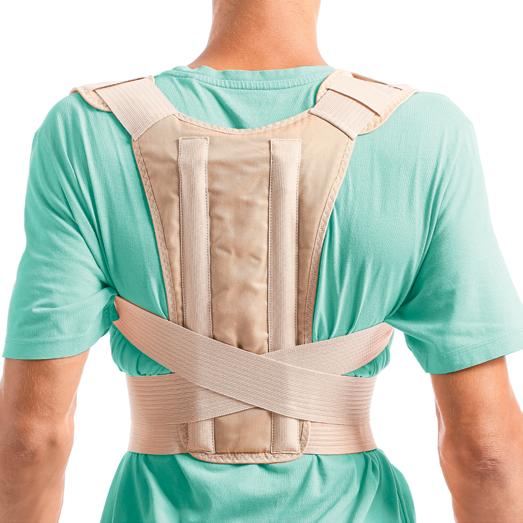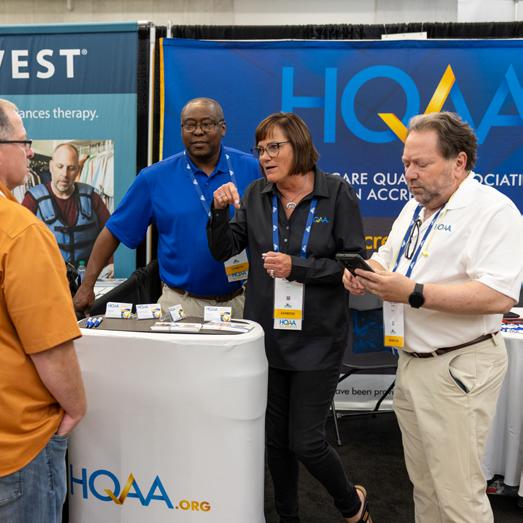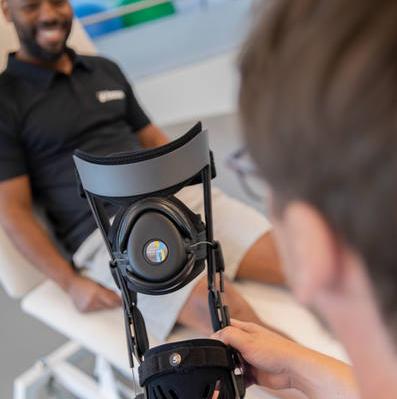




As a home medical equipment and healthcare provider, it’s important to note that you will encounter patients need or will need off the shelf (OTS) bracing sometime in their lifetime.
Orthotics refers to a medical specialty that focuses on the design and application of orthoses, sometimes known as braces or calipers. An orthosis is an externally applied device used to influence the structural and functional characteristics of the neuromuscular and skeletal systems.
Off-the-Shelf (OTS) orthotics are:
• Items that are prefabricated.
• They may or may not be supplied as a kit that requires some assembly. Assembly of the item and/or installation of add-on components and/or the use of some basic materials in preparation of the item does not change classification from OTS to custom fitted.
• OTS items require minimal self-adjustment for fitting at the time of delivery for appropriate use and do not require expertise in trimming, bending, molding, assembling, or customizing to fit an individual.
• This fitting does not require expertise of a certified orthotist or an individual who has specialized training in the provision of orthoses to fit the item to the individual beneficiary.

Custom fitted orthotics are:
• Devices that are prefabricated.
• They may or may not be supplied as a kit that requires some assembly. Assembly of the item and/or installation of add-on components and/or the use of some basic materials in preparation of the item does not change classification from OTS to custom fitted.
• Classification as custom fitted requires more than minimal self-adjustment at the time of delivery in order to provide an individualized fit, i.e., the item must be trimmed, bent, molded (with or without heat), or otherwise modified resulting in alterations beyond minimal self-adjustment.
• This fitting at delivery does require expertise of a certified orthotist or an individual who has specialized training in the provision of orthosis to fit the item to the individual beneficiary.
In addition to being an important market, the need for orthotics also isn’t going anywhere. But does that mean it’s right for your business? Let’s look at some of the other opportunities and considerations that may help you decide.
• As per a new analysis by Persistence Market Research, the global Orthotics Market stood at $3.92 billion in 2021 and is projected to exhibit a high-value CAGR of 7.8% between 2023 and 2032. Sales of orthoses are expected to reach $8.82 billion by the end of 2032.
• About half of the 65+ age demographic in North America are listed as occasional sufferers of osteoarthritis. More than 30 million people have been diagnosed with the condition in the United States. (Ergo Research).
• The patient services which are associated with the orthotic profession may generate up to $4 billion in revenue each year. (American Orthotic Prosthetic Association).

Along with the aforementioned reasons to get into the orthotics market, perhaps the most important is this— patients, payers, and caregivers need a knowledgeable partner. They’re looking for a provider who fully understands the orthotics market and can be a great resource for them now and in the future. So, as an orthotic supply provider, you become an even more essential part of the patient care continuum.
Without the need to add professional staff, OTS orthotics represents an opportunity to accept more referrals and increase incremental sales with little to no financial investment or risk.
The total market size of the orthotics profession in the United States averages $1 billion in revenue each year. Another $1.3 billion is generated through retail and mail order foot care product sales. (Ergo Research). This estimate highlights the need for a strong and knowledgeable partner.
If this isn’t enough to convince you to get into the orthotics market, ask yourself:
• Who is the population you are serving today?
• Does the majority of the population fall into high-risk categories?
• What is your current payer mix? (We know from the data that the U.S.’s aging population is expanding rapidly, so if that is the population you are caring for, orthotics is a good avenue to pursue.)
• What referral sources do you currently work with? Hospitals? Local health clinics? If you answered yes to any of these sources, then orthotic supply is a market you should consider.

For home medical equipment providers, there are various categories within the orthotic arena you can choose to enter (we’ll cover these in more depth in the next section).
Generally, we talk about the following product categories:
• Upper Extremity
• Lower Extremity
• Spinal
Even if you’re not currently providing the items mentioned above, maybe you’re being asked for them, because it’s a good probability the population you are serving has or will have a need for orthotics at some point in time.
The easiest place to start is with the people you already work with. You’ve already developed a rapport with the patients you serve. Start documenting some of the items they ask about as you work with them. You could send a survey to them, but it may be as simple as noting what items they’re inquiring about when they come in or during a home visit.
Payers may also be asking you about orthotic products and supplies, but your referral sources especially provide a great opportunity for research. They’re already sending patients your way, so it’s worth contacting them to discuss what you can do to help provide the care their patients need.
After you’ve discussed potential offerings with your current referral sources, it’s worth reaching out to other sources, such as local hospitals or clinics.
There are other resources available to ease your way. VGM Market Data has the nation’s largest and most comprehensive claims database. Through the use of VGM Market Data, you can:
• Identify and rank high-value referral sources
• Find out who is referring patients to your competitors
• Target your team to make the biggest gains
VGM Market Data can tell you almost instantly whether developing a orthotics program is right for you AND where you should focus your resources to be the most successful.


You’ll also want to check the payer reimbursement rates that will be available should you decide that a orthotic program is right for you.
The easiest place to start is with the Centers for Medicare and Medicaid Services (CMS). CMS’s fee schedule is a matter of public record, so you can begin your research even if you don’t currently hold DME licensure. The Medicare fee schedules can be found at www.cms.gov.
As you look at the fee schedules, you’ll notice there are multiple rates for each item. There are separate reimbursement rates for rural areas, non-rural areas, and competitive bid areas. It is important to know which portion of that population you are serving, so you know which reimbursement rates are applicable to you. For Medicare FFS beneficiaries, reimbursement rates are based on the permanent address on file with Social Security Administration.
Commercial payers’ fee schedules are not public; however, some are known to base their fee schedules on a percentage of CMS’s schedule. When looking into fee schedules for commercial payers, start with the payers you already hold a current contract with.
You probably already have the fee schedule outlined in your contract. Even if you don’t currently hold any contracts with payers, that doesn’t mean you won’t be able to access them. It just requires a little more legwork. Contact the payer relations department for each commercial payer you’re interested in.
Along with reimbursement rates, you’ll want to take note of any expectations payers—CMS, commercial, or otherwise—have outlined for providers who supply orthotic supplies to post- acute patients. Typically, these expectations/requirements can be found in a payer’s provider manual, which can usually be found on their website or requested in printed form.
To make things a little easier yet, there’s HOMELINK They contract with numerous insurance companies and other payer sources to provide ancillary services at the in-network benefit level. Reach out to HOMELINK to find out how to become a credentialed provider within their network.
By joining the HOMELINK network, providers gain access to HOMELINK’s payer contracts. HOMELINK also affords the opportunity for providers to process claims at the in-network benefit level that would otherwise be considered out-of-network if the provider were to submit them directly to the payer.
As you’re looking at getting into the orthotic market, you’ll probably find yourself wondering how your staff is going to accommodate all the necessary aspects. VGM Education has educational courses to inform your staff on the basics of orthotics.
OPGA’s supplier partners have solutions that can help you implement and grow your program in the most cost-effective way. We’ll cover some of our recommendations in the coming sections.
If at any time you have questions or need assistance along the way to developing an orthotics program, don’t hesitate to contact your VGM Account Manager.

Let’s say you’ve read through Section One, done your homework, and determined that the orthotic market is right for your business. Before you begin developing your program, there are still a few things you need to do to lay the groundwork. Follow the steps below to get started.
As noted in Section One, when we talk about orthotics in the home medical equipment space, we’re primarily referring to upper and lower extremity as well as spinal bracing. There are other categories, such as diabetic shoes and inserts or insoles as well as cranial, but for getting started, you’ll want to familiarize yourself with these categories:
• Upper Extremity
• Arm/Shoulder
• Hand/Wrist
• Elbow
• Neck
• Lower Extremity
• Leg/Knee
• Ankle/Foot
• Hip
• Spinal
• Cervical
• Back
PEL offers one source for everything in orthotics care. From the latest advancements in bracing of all kinds to supplies and equipment needed to support them, PEL leverages close manufacturer relationships to provide innovative products, reimbursement information and the education to keep customers ahead of the curve!
They carry the most popular and advanced bracing and bracing supplies. Our top brands include Össur and Breg.
With over 65 years in the business, PEL has set the industry standard for service and with “just-in-time” ordering, you can order what you need when you need it. Say yes to the referral and let PEL take it from there.
• Head to the VGM members-only portal or to the PEL webpage at www.pelsupply.com/vgm and complete the three steps below:
• Step 1
» Please complete the Account Application to set up your PEL account as a VGM member. Don’t forget to sign and date the document prior to sending back to PEL. PEL will send a confirmation email when your account has been established and verified.
• Step 2
» Once your account is set up (step 1) individual users may register online (step 2) to access the website and special member pricing and to place orders and process returns online. Registered users may also view your PEL My Account dashboard which includes orders, invoices, payments, etc. Users will receive an email once their registration is activated. Registered users may be added or deleted at any time.
• Step 3
» After a PEL account is established, a registered user may login by clicking on the LOGIN button.
Please contact PEL Customer Service at 800-321-1264 with any questions.
To further prepare for entering the orthotic market, it’s important to understand what the marketplace is like in your area. Here are some steps to take:
• Interview your current referral sources and ask them what they like or dislike about their current provider.
» If they don’t have a provider, ask what they would like to see if they were to go with you.
• Who is the competition for the category you are looking to provide?
» What is their price? What is the market share in the marketplace? Why do customers choose the competition? What don’t they like about the competition?
• Contact your VGM account manager for an introduction to other VGM members and vendor partners.
The first thing you need to do to get started is let the National Provider Enrollment (NPE) know that you’re entering the OTS orthotic market and which product(s) you are adding to your portfolio. This simply requires you to update your CMS 855S form or go through PECOS electronically. You also need to check the state in which you are providing this service for any license requirements that may be applicable.
• Head to www.cms.gov/Medicare/CMSForms/CMS-Forms/Downloads/cms855s. pdf, complete and submit the form.
• Or, update PECOS electronically, and follow the instructions for adding a product/service to your offerings.
That’s it. Once the NPE contractor processes the update, they’ll know you will be submitting orthotic supplies for reimbursement.

You’ll need to contact your accrediting body and inform them you’re taking referrals for orthotic products. They’ll go over the next steps and any requirements there may be, such as policies, procedures, and other forms.
If you’re in the market for accreditation, VGM partners with the Healthcare Quality Association on Accreditation (HQAA). HQAA makes the accreditation process easy for HME providers. They even pair your organization with an accreditation coach to help you through the entire process.
As part of your compliance initiatives, you’ll need to have your company policies and procedures documented.
You’ll also need to ensure you have the necessary forms at your disposal. In most cases, this means familiarizing yourself and your staff with which forms are required. In others, you’ll want to create forms specific to your organization to help with documentation.
VGM and OPGA’s members-only portal for some of the most common forms, including:
• Continued Medical NecessityDear Clinician Letter
Local coverage determinations (LCDs) are decisions made by Medicare Administrative Contractors (MACs) on whether a service or item is reasonable and necessary (R&N).
In order for a beneficiary’s DME to be eligible for reimbursement, the R&N requirements must be met. In addition, there are specific statutory payment policy requirements, discussed below, that also must be met.
OTS Orthotics
Off-The-Shelf (OTS) Orthotic HCPCS Codes
Section 1847(a)(2) of the Social Security Act (the Act) defines OTS orthotics as those orthotics described in section 1861(s)(9) of the Act for which payment would otherwise be made under section 1834(h) of the Act, which require minimal self-adjustment for appropriate use and do not require expertise in trimming, bending, molding, assembling, or customizing to fit to the individual. Orthotics that are currently paid under section 1834(h) of the Act and are described in section 1861(s)(9) of the Act are leg, arm, back and neck braces. The Medicare Benefit Policy Manual (Publication 100-02), Chapter 15, Section 130 provides the longstanding Medicare definition of “braces.” Braces are defined in this section as “rigid
or semi-rigid devices which are used for the purpose of supporting a weak or deformed body member or restricting or eliminating motion in a diseased or injured part of the body.”
CMS regulations at 42 CFR 414.402 also define the term “minimal self-adjustment” to mean an adjustment that the beneficiary, caretaker for the beneficiary, or supplier of the device can perform and that does not require the services of a certified orthotist (that is, an individual who is certified by the American Board for Certification in Orthotics and Prosthetics, Inc., or by the Board for Orthotist/ Prosthetist Certification) or an individual who has specialized training.
View the final list that identifies the 2014 Healthcare Common Procedure Coding System (HCPCS) codes considered OTS orthotics. Items classified under these codes require minimal self-adjustment for appropriate use and do not require expertise in trimming, bending, molding, assembling, or customizing to fit the beneficiary. Subsequent coding updates to the OTS list will be included in program instructions.

Suppliers of any orthotic other than an OTS orthotic must be in compliance with Appendix C of the DMEPOS quality standards, which specifies that suppliers must possess specialized education, training, and experience in fitting and certification and/or licensing.
Please note that in some cases there are two codes in the HCPCS that may both describe a particular prefabricated orthotic product, one code for when the device is furnished OTS, and a second code for when the device is furnished with custom fitting. In these cases, and in the case of any code for a prefabricated orthotic that requires more than minimal self-adjustment and requires expertise in fitting or customizing, the code that describes a custom fitted orthotic cannot be used unless the custom fitting services have been performed and the supplier is in compliance with Appendix C of the DMEPOS quality standards.


Section 1847(a)(2) of the Act includes OTS orthotics as one of the categories of items subject to competitive bidding. CMS has not determined the schedule for bidding OTS orthotics, but will identify the specific OTS orthotic codes included in a competitive bidding program through program instructions or by other means, such as a CMS or contractor website posting.
As always, if at any time you have questions or need assistance along the way to developing an orthotic program, don’t hesitate to contact your VGM Account Manager.

Throughout the previous two sections, you’ve analyzed if an orthotic program is right for your business and established the foundations for your program to get started. In this section, we’ll outline the various aspects of a welldeveloped program and recommend solutions for your organization. Let’s get started.
The Orthotic and Prosthetic Group of America (OPGA) works to advance the orthotic and prosthetic profession—and help you advance within it. A division of VGM & Associates made, OPGA offers services that help each O&P facility operate more efficiently and increase profitability. This includes exclusive access and discounted pricing with the profession’s most reputable supplier partners.
Medicare requires that providers carry comprehensive liability insurance as well as a surety bond. However, you shouldn’t stop there.
We partner with VGM Insurance Services to help providers get the coverage they need. No one understands HME industry risks like VGM Insurance. Offering a full insurance line solution, VGM Insurance can also provide the necessary surety bonds if you’re billing CMS. It’s never too early to reach out. Contact VGM Insurance to learn more and get a competitive quote today.
Since you’re entering a new market, you’ll have extra inventory to manage. OPGA partners with Nymbl which offers a robust cloud-based solution.
Nymbl Systems is an agile and simple-to-use business management platform, created intentionally for healthcare providers in prosthetics, orthotics, and custom rehab supplies so they can achieve better outcomes.
Nymbl Systems’ fresh approach to age-old challenges providers face make it the ideal solution for today’s modern providers. Its cloud-based, highly flexible billing and business management platform leverages modern technologies to make order intake easier, claims more accurate, and workflows more automated, ultimately helping providers grow their businesses and get paid faster. PEL is integrated with Nymbl Systems.
There’s no denying that regulatory and billing requirements have become more complicated, which slows down the process, can lead to errors, and wastes time pushing papers around. Through our partnerships, OPGA has recommendations for helping you streamline your workflow.
O&P Insight is a full-service consulting group, providing solutions and support for O&P businesses who want to thrive in today’s healthcare environment.
Expertise in providing initial insurance verification through final payment posting including any denial management or appeals necessary. Available services include:
• Claim Submission/Insurance Verification/Prior Authorization
• Documentation Request and Review
• Accounts Receivable/Collections
• Payment Application
• Patient Statements
The van Halem Group offers pre-screen programs to help you prevent overpayments leading to recoupments and audit protection to help you avoid an audit or navigate the process should you find yourself subject to an audit.
In addition to contacting your current referral sources, you’re going to want to get the word out that you’re providing glucose monitoring services. OPGA has several partners that can help in this area.
VGM Forbin specializes in building HIPAA- compliant websites and developing online marketing strategies that include social media, search engine optimization, and reputation management. From mobile responsive and results-focused online marketing services to online portals that help you operate your business more efficiently, VGM Forbin creates solutions to meet your specific needs.
Strategic Imaging is dedicated to relevant marketing through personalized direct mail. Let Strategic Imaging help you get a better response rate with their topquality variable data and variable image printing. They combine years of printing expertise and stateof-the-art digital imaging with data management and programming specialists for target marketing and direct mail campaigns.
VGM Off the Shelf Marketing offers effective, costconscious standard and customizable marketing options to help you build your brand fast. Guides, handbooks, fliers, and inserts are all available through VGM Off the Shelf Marketing.
By providing OPGA members exclusive access to the largest and most comprehensive O&P claims database in the country, VGM Market Data can help you put your money in the right place. VGM Market Data can help you identify your main competitor’s top 20 referral sources. Or, it can help you find your top 50 referral sources by volume who send you less than 50% of their patients. These are just a few examples of the valuable data they can provide. Target smarter with VGM Market Data.
When you’re helping a patient with their orthotic needs, they may be also looking for compression stockings, insoles and other related equipment. If your patients aren’t buying these products from you, they’re likely purchasing online or from a big box store—that means you’re missing out on opportunities to increase cash sales on products that can actually encourage patient compliance. Take a look at the RESOURCE AND SUPPLIER CONTACTS section to find vendor partners that supply them.
This Orthotic Program Guide is just the beginning. We regularly update the members-only portal with resources and solutions to help you develop and grow your orthotic program. But if you can’t find what you’re looking for or you have any questions at all, we’re here to help.